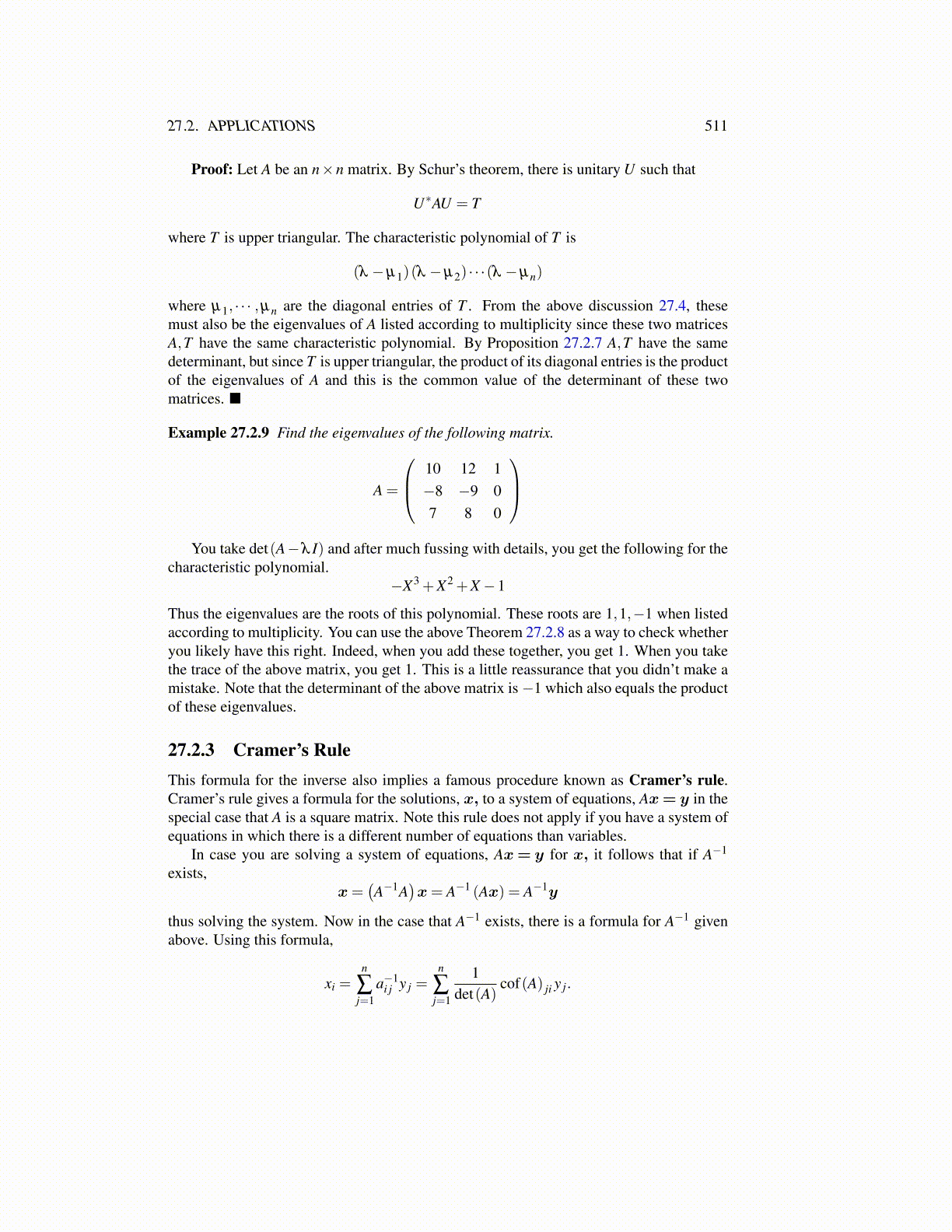
27.2. APPLICATIONS 511
Proof: Let A be an n×n matrix. By Schur’s theorem, there is unitary U such that
U∗AU = T
where T is upper triangular. The characteristic polynomial of T is
(λ −µ1)(λ −µ2) · · ·(λ −µn)
where µ1, · · · ,µn are the diagonal entries of T . From the above discussion 27.4, thesemust also be the eigenvalues of A listed according to multiplicity since these two matricesA,T have the same characteristic polynomial. By Proposition 27.2.7 A,T have the samedeterminant, but since T is upper triangular, the product of its diagonal entries is the productof the eigenvalues of A and this is the common value of the determinant of these twomatrices. ■
Example 27.2.9 Find the eigenvalues of the following matrix.
A =
10 12 1−8 −9 07 8 0
You take det(A−λ I) and after much fussing with details, you get the following for the
characteristic polynomial.−X3 +X2 +X−1
Thus the eigenvalues are the roots of this polynomial. These roots are 1,1,−1 when listedaccording to multiplicity. You can use the above Theorem 27.2.8 as a way to check whetheryou likely have this right. Indeed, when you add these together, you get 1. When you takethe trace of the above matrix, you get 1. This is a little reassurance that you didn’t make amistake. Note that the determinant of the above matrix is−1 which also equals the productof these eigenvalues.
27.2.3 Cramer’s RuleThis formula for the inverse also implies a famous procedure known as Cramer’s rule.Cramer’s rule gives a formula for the solutions, x, to a system of equations, Ax= y in thespecial case that A is a square matrix. Note this rule does not apply if you have a system ofequations in which there is a different number of equations than variables.
In case you are solving a system of equations, Ax= y for x, it follows that if A−1
exists,x=
(A−1A
)x= A−1 (Ax) = A−1y
thus solving the system. Now in the case that A−1 exists, there is a formula for A−1 givenabove. Using this formula,
xi =n
∑j=1
a−1i j y j =
n
∑j=1
1det(A)
cof(A) ji y j.